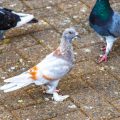1. Introduction to Community Tanks in the UK
Community tanks have long been a staple among aquarists across the UK, offering the rewarding challenge of housing multiple fish species in a single aquarium. These setups are especially popular with hobbyists keen to create visually dynamic and harmonious underwater environments that echo the natural biodiversity found in British rivers and lakes. While community aquariums can be a stunning centrepiece for any home, they come with their own unique set of challenges—particularly when it comes to feeding. Mixing species from different habitats, dietary preferences, and activity levels requires careful planning and continuous observation. In the UK, where enthusiasts often favour combinations such as livebearers with small catfish or temperate species with hardy tropicals, ensuring all inhabitants thrive can feel like a balancing act. The diversity of species means that each fish has its own nutritional needs and preferred feeding behaviours, making communal mealtimes both fascinating and tricky to manage. As more hobbyists turn to community tanks for their beauty and educational value, understanding how to address these feeding challenges becomes an essential part of responsible fishkeeping in British aquaria.
2. Understanding Species-Specific Dietary Needs
When curating a community tank in the UK, aquarists are often drawn to the vibrant mix of fish, invertebrates, and other aquatic creatures available from local aquatic shops and specialist breeders. However, the quintessential British community aquarium is rarely a homogenous space. Instead, it houses a range of species, each with unique dietary demands shaped by their natural habitat and feeding behaviour. Recognising these individual requirements is crucial for promoting harmony and health within your tank.
Fish: Carnivores, Herbivores, Omnivores
The majority of popular British community tank fish—such as Neon Tetras, Guppies, Corydoras catfish, and Dwarf Gouramis—have differing nutritional needs. Some species thrive on protein-rich diets, while others require plant-based nutrition or a balanced omnivorous approach. For instance, Corydoras enjoy sinking pellets and occasional live foods; meanwhile, Mollies benefit from a diet supplemented with blanched vegetables due to their herbivorous leanings.
| Species | Diet Type | Preferred Foods |
|---|---|---|
| Neon Tetra | Omnivore | Micro-pellets, daphnia, crushed flakes |
| Corydoras Catfish | Carnivore/Omnivore | Sinking pellets, bloodworms |
| Molly | Herbivore/Omnivore | Algae wafers, blanched spinach |
| Dwarf Gourami | Omnivore | Flake food, brine shrimp |
Invertebrates: Shrimp and Snails
Aquatic invertebrates like Cherry Shrimp or Nerite Snails are increasingly popular in British tanks for their algae-eating capabilities and unique behaviours. Their diets often differ from fish; for example, shrimp require a combination of biofilm, specialised shrimp pellets, and vegetable matter. Overlooking these needs can stunt growth or lead to health issues.
| Invertebrate | Main Diet Components |
|---|---|
| Cherry Shrimp | Biofilm, shrimp pellets, blanched veg |
| Nerite Snail | Algae (tank surfaces), supplementary wafers |
| Amano Shrimp | Algae, detritus, commercial shrimp food |
The Importance of Tailored Feeding Regimes
Providing a one-size-fits-all feeding schedule risks undernourishing some species while overfeeding others—a common pitfall among UK aquarists new to mixed tanks. By researching the specific dietary habits of your livestock and using targeted foods at appropriate times of day (e.g., sinking foods after lights out for nocturnal feeders), you not only support natural behaviours but also reduce waste and maintain better water quality.
Cultural Note for British Aquarists:
The popularity of certain species in the UK—often reflecting trends set by local aquatic societies and clubs—means that understanding species-specific feeding is part of the wider culture of responsible fishkeeping here. Whether you’re sourcing native sticklebacks or exotic bettas from your local Maidenhead Aquatics or independent shop down the road, knowing what’s on the menu for each resident makes all the difference to their long-term wellbeing.
![]()
3. Selecting Appropriate Foods and Feeding Methods
One of the most delightful challenges of maintaining a thriving community tank in the UK is catering to the varied dietary requirements of your aquatic residents. With the wide range of high-quality foods available in local aquatics shops and online, it’s never been easier to provide a nutritious, balanced diet—so long as you know what to look for.
Pellets, Flakes, and Granules: Everyday Essentials
The backbone of most British home aquaria diets are commercially prepared pellets, flakes, and granules. For surface feeders like guppies and danios, floating flakes or micro-pellets are perfect. Mid-water dwellers such as tetras benefit from slowly sinking granules. Bottom feeders like corydoras catfish relish in quickly sinking wafers or specialised shrimp pellets. Always opt for reputable UK brands with a clear list of ingredients—look for whole fish meal, spirulina, and added vitamins rather than fillers and artificial colours.
Live and Frozen Foods: A Taste of the Wild
Offering live or frozen foods brings a naturalistic touch that stimulates hunting behaviour and enriches your fishes’ lives. In the UK, live daphnia, bloodworm, brine shrimp, and tubifex worms are readily available at most aquatics retailers or by mail order. Frozen variants provide similar nutritional value without the risk of introducing pests. These options are especially appreciated by carnivorous species and can encourage breeding behaviour in more sensitive residents like dwarf cichlids.
Matching Food Form to Feeding Style
Every species has its own feeding habits. Surface skimmers require buoyant foods; bottom grazers need rapidly sinking tablets or wafers. Catfish, loaches, and snails are best fed after lights out when they’re most active. Consider timing feeds at dusk for nocturnal species—a tip popular among seasoned UK hobbyists. Remember to feed little but often; overfeeding is a common issue in British community tanks leading to water quality woes.
By observing your tank’s unique mix of personalities and matching both food type and feeding method accordingly, you’ll soon find that harmonious mealtime rhythm that keeps every finned resident happy and healthy in your UK aquarium.
4. Avoiding Overfeeding and Managing Competition
One of the most common pitfalls in UK community aquaria is overfeeding, which can lead to poor water quality and unhealthy fish. Striking a balance between feeding enough for all species while avoiding excess requires attention and practical strategies.
Practical Strategies to Prevent Overfeeding
Start by understanding the dietary needs of each species in your tank. Many UK hobbyists find success by feeding small amounts two to three times per day, observing how quickly food is consumed. If there is uneaten food after five minutes, reduce the next portion. Invest in a quality aquarium siphon to remove leftovers promptly, maintaining water clarity and reducing waste buildup.
Dealing with Aggressive Feeders
Some fish, such as barbs or certain cichlids, can dominate meal times, leaving more timid species hungry. To manage this competition:
- Feed at multiple locations: Scatter food across different areas or corners of the tank so that aggressive feeders cannot monopolise every spot.
- Use sinking and floating foods: Offer a mix of pellets or flakes that float and those that sink, ensuring mid-water and bottom dwellers get their share.
- Distract dominant fish: Begin feeding with a small amount at one end to attract bold eaters, then quietly place food at the opposite end for shyer species.
Feeding Strategies Table
| Challenge | Strategy | UK Aquarist Tip |
|---|---|---|
| Aggressive feeders dominating meals | Feed at multiple points; use floating and sinking foods | Try using feeding rings available in most UK pet shops to localise flake distribution |
| Timid or nocturnal species missing out | Add food after lights out or use slow-sinking pellets | Corydoras and loaches often feed best at dusk – adjust schedule accordingly |
| Overfeeding concerns | Observe feeding response; remove uneaten food after 5 mins | A weekly ‘fasting day’ is common practice among British aquarists to prevent obesity |
Ensuring Fair Access for All Tank Inhabitants
Diversity is the hallmark of a thriving community tank, but it also means extra care is needed during feeding. Staggered feeding times or the use of specialised foods (like algae wafers for plecos) ensures everyone gets their fair share. For densely stocked tanks, consider automatic feeders set to dispense small portions throughout the day—a popular solution for busy UK fishkeepers.
5. Supplementary Feeding and Treats
Introducing supplementary foods and treats into your community tank is both an art and a science, especially when tailoring your approach to the unique needs of UK aquaria. While staple diets such as high-quality flake, pellet, or wafer foods provide a reliable nutritional base, offering occasional extras not only enriches your fishes’ lives but can also help address specific dietary requirements, particularly in mixed-species set-ups.
How and When to Introduce Treats
Treats should be offered sparingly—think once or twice a week—so as not to disrupt the balance of the tank or encourage picky eating habits. The best time for treats is mid-morning or early evening, when fish are most active and likely to feed. Always observe how your residents respond: ensure that treats are consumed within a few minutes to avoid water quality issues.
Seasonal British Ingredients
The changing seasons in the UK offer opportunities to introduce safe, local produce into your feeding routine. In spring and summer, blanched peas (with skins removed) are a superb fibre source for goldfish and bottom-feeders alike. During autumn, small amounts of homegrown courgette or cucumber slices can be offered as a refreshing treat. For protein boosts, live or frozen daphnia collected from reputable sources are a British classic—just remember to rinse thoroughly before feeding.
Homegrown Options and Safety Tips
If you fancy growing your own treats, opt for organic vegetables free from pesticides and fertilisers. Fresh herbs like basil or spinach (blanched) can be trialled in small quantities with herbivorous species such as mollies or plecos. Never introduce wild-gathered plants unless you’re certain they’re non-toxic and have been thoroughly cleaned. Avoid root vegetables like potatoes which are unsuitable for most aquatic species.
Special Considerations for Diverse Species
When catering to a community tank with varied inhabitants—perhaps a lively mix of tetras, corydoras, and barbs—it’s essential to tailor treat types and delivery methods. Use sinking wafers or scatter soft vegetables near hiding spots for shy bottom-dwellers. Surface feeders might appreciate floating treats like bloodworms or brine shrimp, while omnivores will relish the challenge of nibbling at vegetable clips attached to the glass.
Monitoring Impact on Water Quality
Always remove any uneaten supplementary food within 15–20 minutes to prevent fouling. Regular water tests are vital; sudden spikes in ammonia or nitrite may indicate overfeeding. Remember, less is more: it’s better to under-offer than risk polluting your carefully balanced aquatic environment.
By thoughtfully integrating seasonal British treats and safe homegrown options into your feeding schedule, you’ll foster healthier, more active fish—and perhaps discover new favourites among your scaly companions!
6. Monitoring Health and Adjusting Feeding Regimes
Spotting the Signs of Malnutrition or Overfeeding
Maintaining a harmonious community tank in the UK goes beyond simply offering a variety of food; it requires vigilant observation to ensure every species is thriving. Malnutrition and overfeeding are common issues in mixed-species aquaria, often presenting subtle signs before escalating into major health concerns. Watch for sluggish or erratic swimming, faded colours, hollow bellies, and fin deterioration as indicators of undernourishment. Conversely, signs of overfeeding include bloated bodies, fatty deposits (especially around the abdomen), excessive algae growth, and cloudy water conditions—an all-too-familiar scene for many British fishkeepers.
Adjusting Nutrition Plans for a Thriving Tank
The key to a healthy UK community tank lies in responsive feeding strategies. Begin by tracking how much your fish consume within a few minutes at each feeding. If leftovers persist or certain species consistently miss out, adjust portion sizes and feeding locations. Consider staggering feedings throughout the day or using floating and sinking foods simultaneously to cater to different dietary habits—perfect for tanks with both top-feeders like danios and bottom-dwellers such as corydoras.
Regular Checks and Seasonal Tweaks
In the fluctuating British climate, water temperature can influence metabolism and appetite. During cooler months, some species will require less food, so be ready to reduce rations accordingly to prevent waste accumulation. Establish a weekly routine: observe your fish during feeding, note any changes in behaviour or appearance, and siphon out uneaten food promptly.
Consulting Local Expertise
If you’re uncertain about your tank’s balance, don’t hesitate to seek advice from your local aquatic shop or fishkeeping club. These community resources are invaluable for tailored recommendations based on regional water chemistry and species-specific needs found commonly in UK aquaria.
Summary
By closely monitoring your fish and being proactive in adjusting feeding regimes, you’ll keep your community tank vibrant and healthy. Remember: successful feeding management is an ongoing process—one that rewards careful observation with colourful displays and lively activity in your British home aquarium.
7. Responsible Feeding and Environmental Impact
When managing a community tank in the UK, responsible feeding goes hand-in-hand with environmental awareness. As eco-conscious aquarists, it’s vital to consider not just what we feed our fish, but also the broader impact of our choices. Sourcing food sustainably, avoiding invasive species in live foods, and minimising waste are key aspects of a modern, ethical aquarium hobby.
Sustainable Sourcing for UK Aquarists
Opting for fish foods produced with sustainability in mind helps protect both wild fish stocks and the wider environment. Seek out brands that use responsibly harvested ingredients or certified sustainable sources. When purchasing live or frozen foods, favour reputable UK suppliers who can guarantee their products are ethically sourced and free from harmful bycatch or illegal harvesting practices. Supporting local businesses not only reduces your carbon footprint but also strengthens the UK’s ethical aquatics trade.
Avoiding Invasive Species in Live Foods
Introducing non-native live foods, such as certain worms or crustaceans, poses real risks if these species escape into local waterways. Always verify that any live food is safe and legal within the UK—never release unused live food into drains, toilets, or outdoor water bodies. Stick to well-known species approved for aquarium use, like bloodworms, brine shrimp, or daphnia from trusted suppliers. This mindful approach protects local ecosystems from accidental introduction of potentially invasive species.
Minimising Waste in the Community Tank
Overfeeding not only leads to poor water quality but also contributes to unnecessary food waste. To keep things tidy, feed small amounts at a time and observe how quickly your fish consume their meals; remove any uneaten food promptly with a net or siphon. Composting suitable waste or using food scraps as garden fertiliser (when safe) can further reduce your environmental footprint. By adopting these habits, you ensure your tank remains healthy while doing your bit for the planet—a win-win for both fish and finned friends across the UK!


